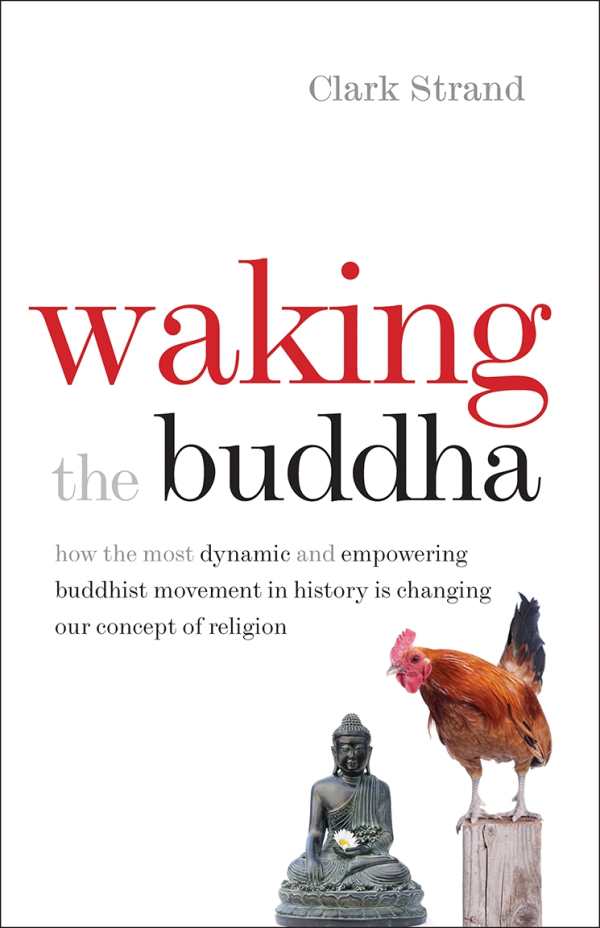Waking the Buddha
How the Most Dynamic and Empowering Buddhist Movement in History Is Changing Our Concept of Religion
An accessible work of theological history traces how a Japanese Buddhist movement has spread its simple message of hope worldwide.
With over twelve million members, Soka Gakkai International is one of the largest lay Buddhist groups. Based on the Lotus Sutra and the writings of thirteenth-century Japanese monk Nichiren, SGI prioritizes group discussion and the mentor-disciple relationship over private meditation. Teaching the equality of all, it is more of a populist, humanist movement than a religious sect. In Waking the Buddha, Clark Strand, a former Zen Buddhist monk and (until the mid-1990s) senior editor of Tricycle: The Buddhist Review, gives a thorough, lively history of SGI, including brief biographies of its founding figures and an overview of its tenets.
Soka Gakkai was established in 1930 by Tsunesaburo Makiguchi, a Japanese educator. During World War II, Makiguchi and his disciple, Josei Toda, were imprisoned in Tokyo, charged as “thought criminals” because, as pacifists, they would not support Japan’s war effort. Toda made a string of Buddhist prayer beads out of milk bottle tops, a photo of which inspired Strand to write this book: he wanted to discover how Toda’s faith sustained him through his prison sentence.
Strand astutely notes that most religious movements have a trio of founders, corresponding to the three phases of “creation, development, and stabilization.” Makiguchi’s was the risky act of creation and Toda’s the hard work of formation; the third task of international evangelism fell to Daisaku Ikeda, now in his eighties. From the beginning, SGI was prophetic, speaking out against injustice and questioning religious tribalism. In 1957, Toda called for the abolition of nuclear weapons; “the Buddha is life itself,” he declared, and nuclear warfare is incompatible with ensuring life and dignity for all.
The author takes what at first, in the biographical sections, feels like a niche subject and lends it universal significance through his discussion of SGI’s aims and beliefs. There is no “spiritual posturing” here, he insists, only a conviction that ordinary people can find fullness of life in harmony with others and with nature. Anyone can “change their karma and attain enlightenment” through chanting the Lotus Sutra. Ikeda summarized SGI’s goal as “promoting world peace through individual happiness,” and Strand adds that by “openly addressing the challenges to happiness faced by the ordinary individual … it makes religion answerable to life,” rather than the opposite, as seems to be the case in many faiths.
Strand gives a clear picture of how SGI developed and what it means to its followers, but some may wish for a better idea of daily practice. An appendix of passages from the Lotus Sutra, plus examples of how chanting and group discussion foster a Buddhist’s essential optimism about life, might help support the book’s occasional overstatements (“the Soka Gakkai may well be the newest thing in the world” and the “first true global religion”). The author might also have surveyed other religions’ peace and social justice revolutions to promote interfaith dialogue. Those intrigued by the history of Japanese Buddhism or with prior interest in SGI will certainly enjoy Waking the Buddha.
Reviewed by
Rebecca Foster
Disclosure: This article is not an endorsement, but a review. The publisher of this book provided free copies of the book and paid a small fee to have their book reviewed by a professional reviewer. Foreword Reviews and Clarion Reviews make no guarantee that the publisher will receive a positive review. Foreword Magazine, Inc. is disclosing this in accordance with the Federal Trade Commission’s 16 CFR, Part 255.

